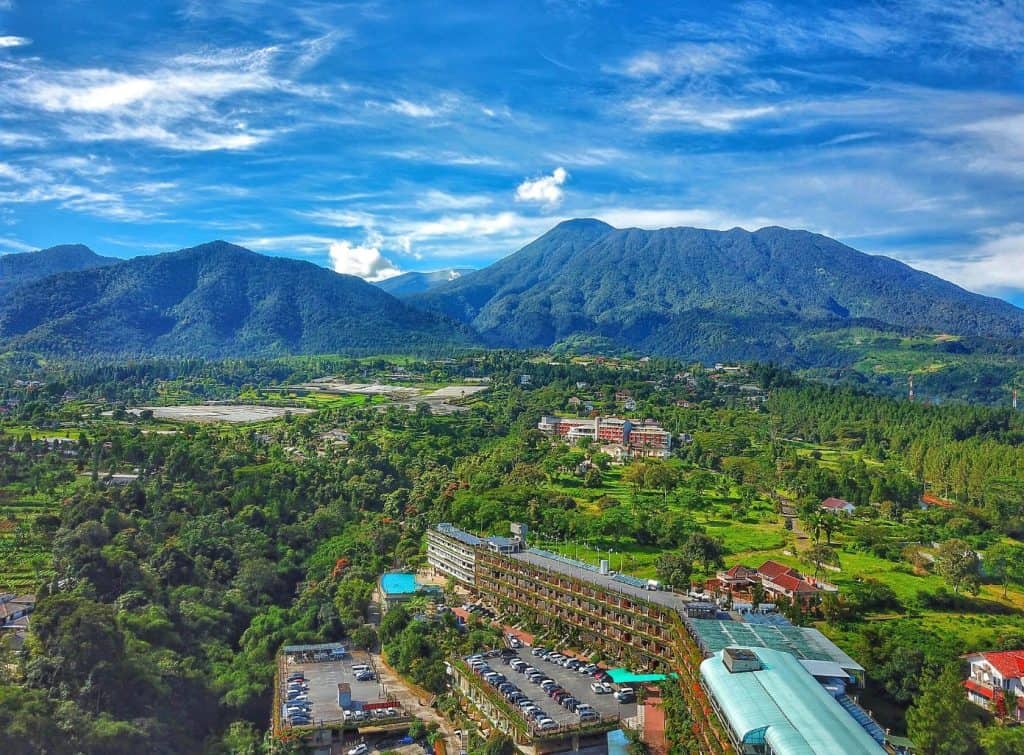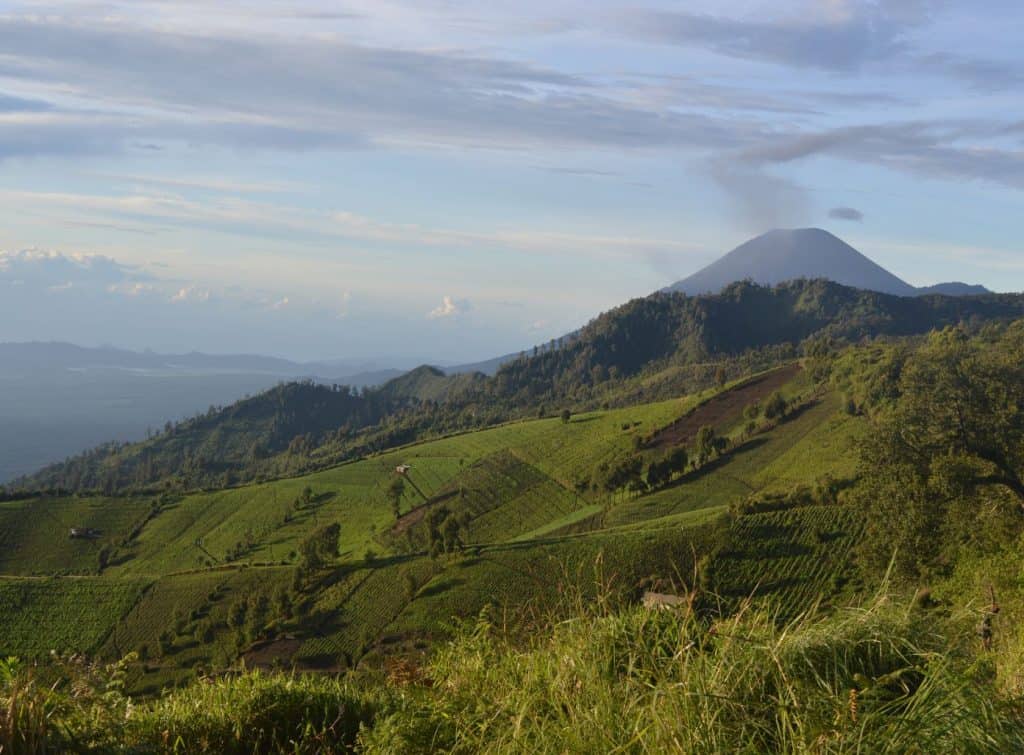Indonesia, a country known for its breathtaking natural beauty, is home to some of the world’s most impressive mountains. From the volcanic peaks of Mount Bromo to the lush green slopes of Mount Rinjani, Indonesia’s mountainous landscape is a sight to behold. However, one mountain stands out among the rest – Puncak Jaya, the highest peak in Indonesia.

Introduction to Indonesia’s Mountainous Landscape
Before we delve into the majesty of Puncak Jaya, let’s first take a closer look at Indonesia’s topography. Spanning over 17,000 islands, Indonesia is characterized by its rugged terrain and active tectonic plates. This geological diversity has given rise to a vast array of mountains, each with its own unique characteristics.
Overview of Indonesia’s Topography
The archipelago is divided into three main regions – the Sumatra and Java volcanic belts, the Sulawesi and Halmahera volcanic arcs, and the active tectonic collision zones of Borneo and New Guinea. These regions not only contribute to the country’s mountainous landscape but also shape its unique ecosystem.
Let’s start with the Sumatra and Java volcanic belts. These belts are home to some of the most iconic mountains in Indonesia, including Mount Semeru and Mount Merapi. The volcanic activity in this region has created fertile soil, making it an ideal environment for agriculture. The lush greenery that blankets the slopes of these mountains is not only visually stunning but also provides a habitat for various plant and animal species.
Moving on to the Sulawesi and Halmahera volcanic arcs, we find a different kind of mountainous landscape. These arcs are known for their unique geological formations, such as karst limestone hills and volcanic cones. The rugged terrain of this region has resulted in the formation of deep valleys and steep cliffs, creating a dramatic and awe-inspiring scenery. It is also home to endemic species that have adapted to the challenging conditions of this environment.
Lastly, we have the active tectonic collision zones of Borneo and New Guinea. These areas are characterized by their towering peaks and rugged mountain ranges. Mount Kinabalu in Borneo and Puncak Jaya in New Guinea are among the highest mountains in Southeast Asia. The collision of tectonic plates in these regions has not only shaped the landscape but also created a unique mix of flora and fauna that can only be found in these remote and untouched areas.
The Role of Mountains in Indonesia’s Ecosystem
Mountains play a crucial role in Indonesia’s ecosystem, acting as natural barriers and influencing climate patterns. As clouds gather on the mountains’ slopes, they create a microclimate that supports diverse flora and fauna. The elevation gradient allows different species to thrive at various altitudes, resulting in a rich biodiversity that is unparalleled.
One example of the importance of mountains in Indonesia’s ecosystem is the island of Bali. The volcanic mountains in Bali, such as Mount Agung and Mount Batur, not only provide a stunning backdrop to the island’s famous beaches but also play a vital role in the island’s water supply. The mountains capture and store rainfall, which is then released slowly, ensuring a steady water supply for agriculture and human consumption.
Furthermore, mountains in Indonesia act as natural habitats for various endangered species. The dense forests and remote locations of these mountains provide a sanctuary for animals such as the Sumatran tiger, Javan rhinoceros, and orangutans. These species rely on the mountains for their survival, as they offer protection and a suitable environment for breeding and foraging.
In conclusion, Indonesia’s mountainous landscape is a result of its unique geology and active tectonic plates. These mountains not only provide breathtaking scenery but also play a vital role in shaping the country’s ecosystem. From the volcanic belts of Sumatra and Java to the collision zones of Borneo and New Guinea, each mountain range offers its own distinct beauty and contributes to the rich biodiversity that Indonesia is known for.

The Majesty of Puncak Jaya: Indonesia’s Highest Peak
At a staggering height of 4,884 meters (16,024 feet), Puncak Jaya stands proudly as Indonesia’s highest peak. Located in the easternmost province of Papua, this majestic mountain offers a challenging yet rewarding experience for adventurers and nature enthusiasts alike.
The Geographical Features of Puncak Jaya
Puncak Jaya, also known as Mount Carstensz, is part of the Sudirman Range within the Jayawijaya Mountains. This range is renowned for its sharp granite cliffs, deep valleys, and permanent snow fields. The stunning natural beauty of Puncak Jaya attracts climbers from around the world, eager to conquer its towering heights.
The Flora and Fauna of Puncak Jaya
Despite its harsh conditions, Puncak Jaya is home to a diverse range of plant and animal species. The mountain’s high elevation supports unique vegetation, including mosses, lichens, and alpine grasses. In addition, the dense rainforests surrounding the mountain are inhabited by rare bird species, such as the iconic birds of paradise.
The Journey to the Summit: A Detailed Guide
Embarking on the journey to the summit of Puncak Jaya requires careful planning and preparation. Here is a step-by-step guide to help you navigate the challenging terrain and make your way to the top.
Preparing for the Climb: Essential Gear and Fitness Requirements
Before setting foot on Puncak Jaya, it is crucial to ensure you have the necessary gear and physical fitness to tackle this demanding expedition. Proper hiking boots, warm clothing, and a well-stocked backpack are essential for withstanding the mountain’s treacherous conditions. It is also advisable to engage in endurance training and acclimatization exercises to enhance your climbing capabilities.
The Climbing Route: A Step-by-Step Guide
There are several routes to choose from when climbing Puncak Jaya, each with its own level of difficulty and scenery. The most commonly used route is the Carstensz Pyramid Expedition, which involves navigating through dense rainforests, crossing treacherous glaciers, and ascending sheer rock walls. It is essential to have experienced guides and skilled climbers by your side to ensure a safe and successful ascent.
The Cultural Significance of Mountains in Indonesia
Mountains hold great cultural significance in Indonesia, deeply woven into the fabric of the country’s folklore, mythology, and local communities. Let’s delve into the rich cultural tapestry that surrounds these majestic natural wonders.
Mountains in Indonesian Folklore and Mythology
Indonesia’s diverse cultural heritage is replete with tales of mountain spirits, enchanted peaks, and ancient legends. Mountains are often depicted as sacred realms where deities reside, serving as a bridge between the earthly realm and the divine. Stories of heroic mountain climbers and mythical creatures continue to captivate the imagination of Indonesians to this day.
The Role of Mountains in Local Communities
For many local communities living in the shadow of mountains, these towering landscapes are not only a source of livelihood but also an integral part of their identity. Mountains provide fertile soil for agriculture, a source of freshwater, and shelter for cultural practices. The symbiotic relationship between humans and mountains is an essential aspect of Indonesian culture.
Conservation Efforts in Indonesia’s Mountainous Regions
As Indonesia’s mountainous regions face various ecological challenges, conservation efforts have been initiated to protect these delicate ecosystems and maintain their natural beauty.
Threats to Indonesia’s Mountain Ecosystems
Mining, deforestation, pollution, and climate change pose significant threats to Indonesia’s mountain ecosystems. These human-induced activities disrupt the delicate balance of flora and fauna, negatively impacting the biodiversity and overall health of these natural habitats.
Current Conservation Initiatives and Their Impact
In response to these challenges, various organizations are working tirelessly to protect Indonesia’s mountains. Conservation projects focus on reforestation, community engagement, and sustainable tourism practices. Efforts to raise awareness about the importance of these ecosystems have also been successful in garnering support and ensuring the long-term preservation of these pristine natural wonders.
Exploring the highest mountain in Indonesia, Puncak Jaya, is an adventure that combines physical endurance with the awe-inspiring beauty of nature. As climbers ascend its peaks, they are not only conquering a majestic summit, but also gaining a deeper understanding of the cultural and ecological significance of Indonesia’s mountains. Embark on this journey of a lifetime and discover the wonders that await at Puncak Jaya.

